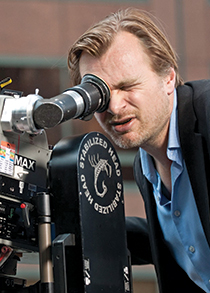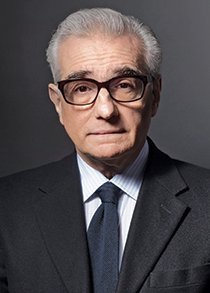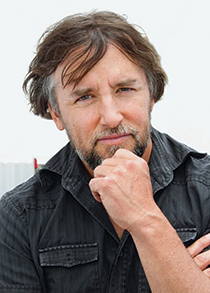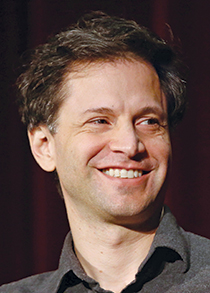BY HUGH HART
Even after Richard Linklater shot his DGA Award-nominated movie, Boyhood, on film, the Austin-based director had no qualms about switching to digital video for his upcoming '80s-era comedy, Everybody Wants Some. "I'm not an absolutist so I've never really bought into digital versus film," Linklater says. "Film history is full of these little bursts of, 'Oh there's a huge paradigm shift!' and then it kind of recedes back to what filmmaking is at its core—storytelling. And behind that storytelling is a director and a creative team making aesthetic choices: What should the movie look like? What should it feel like? To me, that's the director's job."
And those aesthetic choices continue to include the option to shoot on film thanks in part to Christopher Nolan's advocacy. The British-born filmmaker, who's shot all of his movies on film stock, has no interest in imposing personal taste on other artists. Instead, he wants to fortify the integrity of the director's voice. "I'm not anti-digital in any way, but I'm absolutely committed to getting this choice back into the hands of the director. I don't want anyone telling any filmmaker they can't shoot on film any more than I want anyone telling David Fincher or Steven Soderbergh that they can't shoot digital. It's the director's right. It's their choice."

|
"I don’t want anyone telling any filmmaker they can’t shoot on film any more than telling David Fincher or Steven Soderbergh that they can’t shoot digital. It’s the director’s right. It’s their choice."
∼ Christopher Nolan
|
Nolan became alarmed about the future of film last summer when Eastman Kodak Company, the only remaining manufacturer of 35 millimeter stock, threatened to shutter its photochemical film business. Kodak CEO Jeff Clarke explains the company's dilemma: "We used to make prints for tens of thousands of theaters but over the past eight years, we went down 96 percent, from roughly 25 billion linear feet of film a year to half a billion." Faced with the prospect of stopping film production at the company's upstate New York factory, Clarke decided to visit Los Angeles and meet with his customers so he could gauge Hollywood's interest in the future of celluloid.
As he visited studio executives, Clarke also sat down with Nolan. "The heads of postproduction and production at the studios had all basically told Jeff to buzz off: film's dead, digital's everything," Nolan recalls. "I turned around and said, 'You need to be talking to a higher level because nobody running a Hollywood movie studio is going to want to oversee the death of a technology which not only is a prized part of our history; it's also something we absolutely need for the future."
Though he was deep into postproduction on Interstellar, Nolan got on the phone with filmmakers including Steven Spielberg, J.J. Abrams, Bennett Miller, and Judd Apatow. They, in turn, called the studios and lobbied for a continued commitment to the medium of film. Clarke recalls, "Within 48 hours of having lunch with Christopher Nolan, I'd gotten calls from five of the six major studios and a dozen of the most important filmmakers. At that point we were able to build a coalition."

|
"Film has a history … and that’s part of the art form—the light meets the emulsion and extraordinary things happen. So yes, I believe it is essential to preserve that choice."
∼ Martin Scorsese
|
Martin Scorsese was another director who supported the Keep-Kodak-Open campaign. "Filmmakers should have the choice of whether they want to shoot on film, it's important to have the option," he says. "Film has a history, and that history doesn't begin with digital formats, it begins with film. … And that's part of the art form—the light meets the emulsion and extraordinary things happen. So yes, I believe it is essential to preserve that choice."
As a result of the high-powered lobbying, all the major studios agreed in February to buy contractually specified quantities of film stock from Kodak over the next several years. The Kodak deal assures the continued production of movies using film on the scale of such upcoming shot-on-film releases like J.J. Abrams' Star Wars: Episode VII - The Force Awakens, Quentin Tarantino's The Hateful Eight, Sam Mendes' latest installment of the Bond franchise, Spectre, David O. Russell's Joy and Zack Snyder's Batman v Superman: Dawn of Justice.
The Directors Guild supported the agreement. "While most appreciate the opportunities that digital provides, directors and fans alike share a love for the beauty and history of film," DGA President Paris Barclay said at the time. "We're incredibly pleased that film will remain a viable option for filmmakers for the foreseeable future."
AESTHETICS AND ECONOMICS
After carefully investigating the options, film remained the format of choice for Miller. "Before we shot Foxcatcher, I did extensive tests in camera, on lenses, and in post to manipulate the digital image to approximate the result we were getting on film," he says. "When you put them up side by side, the film image hits you in the gut immediately. There's a cleaner, drier feel to the digital image that doesn't quite have the dimension and weight of photochemical."
Miller shoots television commercials on digital, but he negotiated long and hard with Sony Pictures so he could make his 2011 Oscar-nominated Moneyball on film. "For me, shooting a television commercial is a very different standard from shooting a film," says Miller, who also made his relatively low-budget 2005 debut feature Capote on film. "And by the way, I'm looking forward to shooting films in digital if that choice makes more sense aesthetically. But film communicates on many frequencies so the aesthetics of the image itself is, in my view, very significant."

|
"Filmmaking at its core is storytelling. Behind that is a director and a creative team making aesthetic choices: What should it look like? What should it feel like? That’s the director’s job."
∼ Richard Linklater
|
The migration to digital video has been spurred, in part, by the promise of reduced production and distribution costs. But Nolan questions the now-conventional wisdom that shooting on film automatically inflates a movie's overall budget. "Production managers and line producers can empower the director to make the creative choices that are important to him or her. To isolate a set of costs, and say, 'You can't do this because it adds this cost to the budget,' we all know that's not the reality of the way films are budgeted. When you make a deal with a cast member, the line producer's not going to tap you on the shoulder and say you can't have this cast member because they cost $100,000 more than that cast member. There are all kinds of line items on budgets, some of them very considerable, that have to be negotiated and whittled away."
Greg Silverman, president of creative development and worldwide production for Warner Bros. Pictures, also disputes the notion that film costs more than digital. "We haven't found that to be a hard and fast rule," he says. "There are ways to use film that would make it less expensive than someone else using digital, and vice versa."
Ultimately, Silverman says, "We look at filmmaking as a holistic process—what's the total budget at the end of the day for delivering the movie? We're not saying to anyone that for budgetary reasons you need to shoot on one or the other. If a director feels that shooting on film is the best way to tell the story, we want to make sure he or she has that choice."
While most movies now being shot on film boast substantial resources, Nolan, who worked with a $3.5 million budget when he shot Memento on 35 mm, argues that inventive filmmakers on tight budgets can also figure out ways to work with film. "You can go online and buy a fantastic 35 mm camera for $5,000, and Panavision does excellent deals on rentals," he says. "I don't want people looking at what I do and say, 'Oh that's all fine for you [to shoot on film] because you have huge budgets and you've been doing these enormous films.' There are all kinds of ways to shoot very practically. Film has to be kept alive for independent filmmakers, for first-time filmmakers, for people who have dreamed of shooting their entire lives and suddenly now they've got financiers and backers who've drunk the Kool-Aid of new technology and tell them, 'That's not practical.'"
Directors who exercise the film option still face the issue of where they can show their picture. Since movie theaters converted en masse from film to digital projection following the 2008 guidelines presented by Digital Cinema Initiatives, motion pictures originally captured on film need to be rendered as digital cinema packages for mass distribution purposes. But Nolan sees the shrinking number of analog venues as a marketing opportunity. "It's about showmanship," he explains. "We released Interstellar first only on photochemical film prints for two days to incentivize and reward theaters who'd stuck with films or converted back to run their film projectors for us. It grossed disproportionately high numbers particularly on 53 IMAX screens worldwide. In other words, it had commercial value."

|
"Side by side, the film image hits you in the gut immediately.
There’s a cleaner, drier feel to the digital image that doesn’t quite have the dimension and weight of photochemical."
∼ Bennett Miller
|
Paul Thomas Anderson created a similar sense of occasion by orchestrating special 70 mm screenings of The Master, and Tarantino has big plans for the 70 mm release of The Hateful Eight. The film will receive the widest 70 mm release in years on Christmas Day followed by a two-week roadshow engagement in 70 mm before the digital wide release. In fact, Tarantino is so dedicated to shooting and exhibiting his work on film that he is reportedly going to retrofit 50 theaters worldwide with 70 mm equipment. "Once the studio sees the value in this kind of release," Nolan says, "they're happy to invest because it helps sell the film."
THE FUTURE
Looking beyond the immediate theatrical release, Nolan argues that photochemical film prints also accommodate future exhibition formats when compared with digital data. "If you shoot on film and post-produce on film, you'll be able to make 4K, 8K, 12K masters of those movies and they're going to look fantastic," he says. "For example, you can go back to the Ben-Hur print and master it beautifully on Blu-ray. The resolution you get from film is vastly superior to video, so it's a better place to scale up higher in terms of resolution. If your assets are archived photochemically, you can distribute digitally in whatever resolution comes along in the future."
As one of the leading advocates for movie preservation, Scorsese has long been outspoken about the necessity to save a director's work on film. "Film is still the only preservation medium that we know to be durable," he says. "We just don't know about digital storage systems. They haven't been around long enough, and, more importantly, they're always changing. I think it's important to preserve our pictures on film, no matter how we've shot them or finished them. That means negatives, and it means prints."
As digital cinema technology continues to advance, the freedom to pick and choose formats remains central to the filmmaker's storytelling sensibility and should be the right of all directors. Nolan says, "I've been having this argument my entire career, going back to Following, which I shot on 16 mm, where people asked me, 'Why don't you shoot on video? What difference does it make? It's just a subtlety.' But as directors, we have to cling to the idea that all of these subtleties, combined, add up to what we love about movies."